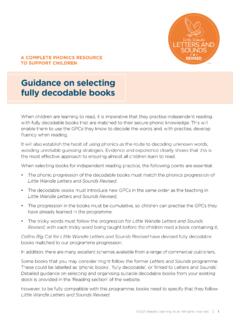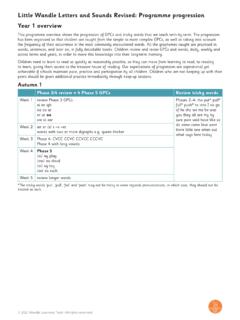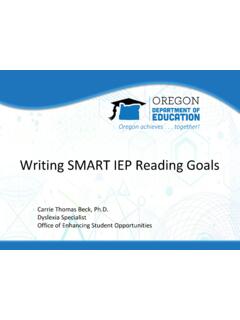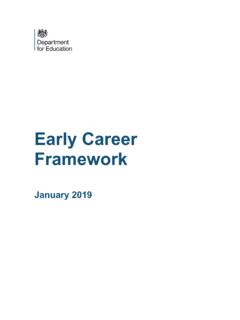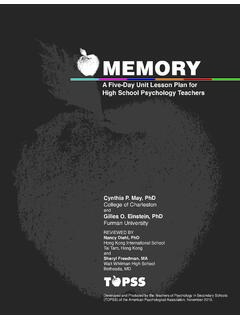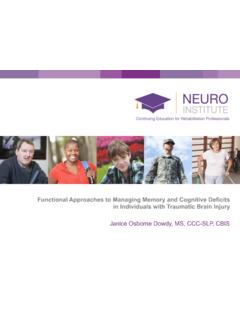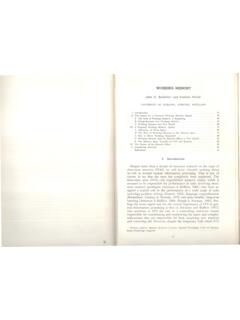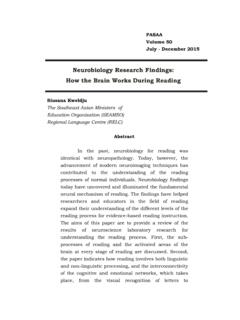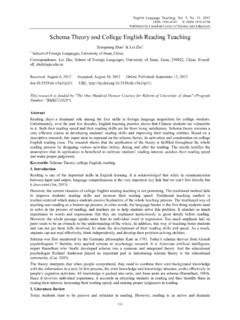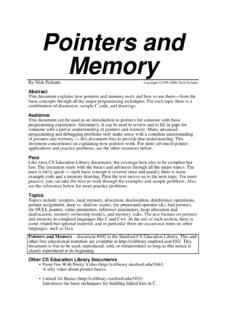Transcription of Application of phonics to reading
1 1 2021 Wandle Learning Trust. All rights COMPLETE phonics RESOURCE TO SUPPORT CHILDRENA pplication of phonics to readingThe National Curriculum for English (2014) aims to ensure that all pupils: read easily, fluently and with good understanding develop the habit of reading widely and often, for both pleasure and information acquire a wide vocabulary, an understanding of grammar and knowledge of linguistic conventions for reading , writing and spoken underpins children s access to the curriculum and it clearly impacts on their achievement. There is considerable research to show that children who enjoy reading and choose to read benefit not only academically, but also socially and be able to read, children need to be taught an efficient strategy to decode words. That strategy is phonics . It is essential that children are actively taught and supported to use phonics as the only approach to decoding. Other strategies must be avoided. Phonic decoding skills must be practised until children become automatic and fluent reading is decoding is only one component of reading .
2 Comprehension skills need to be taught to enable children to make sense of what they read, build on what they already know and give them a desire to want to increases children s vocabulary because they encounter words they would rarely hear or use in everyday speech. Furthermore, children who read widely and frequently also have more secure general knowledge. Reference: 1 Clark, C and Rumbold, K. (2006) reading for Pleasure. National Literacy 2021 Wandle Learning Trust. All rights practice sessionsChildren need to be given regular opportunities to apply the phonics they have learned to reading fully decodable books. The phonic progression in these books must match the progression of Little Wandle Letters and Sounds Revised. It is advisable that reading practice sessions take place at least three times a week. Each reading practice session needs to have a clear focus, so that the demands of the session do not overload the children s working memory . The reading practice sessions have been designed to focus on three key reading skills: decoding prosody reading with meaning, stress and intonation comprehension understanding the These sessions need to be well-planned and executed to enable children to become confident readers who read with understanding.
3 In Reception and Year 1, it is advisable that three reading practice sessions are timetabled for each week. We recommend that the same book is used over the three sessions. Resources In order to ensure a successful reading practice session, prior preparation is key. The following resources should be prepared in advance of the sessions: grapheme cards word cards tricky word cards pages from the book which will be used to model prosody (it is useful to mark them with sticky notes) comprehension questions reading books (the correct number of reading books need to be ready with other resources in working order to enable teachers/teaching assistants to grab and go and maximise the time for the reading practice session).3 2021 Wandle Learning Trust. All rights and structure The reading practice sessions have a clear structure: Pre-read: Revisit and review reading practice: Practise and apply Review: Pacey review of any misconceptions and explanation of what is expected for home reading .
4 Pre-read: Revisit and reviewIt is important to start every reading practice session with a revisit and review . This will enable the children to bring the GPCs they have learned to the forefront of their memory . This will make it easier for them to automatically recall the words and set them up to succeed when they read the book. This part of the session should be short and pacey. It provides the ideal opportunity to: revise the graphemes the children should already know practise fluently reading three or four words from the book, applying their phonic knowledge revise the tricky words that appear in the book Teach the meaning of unfamiliar vocabulary. reading practice: Practise and apply Practise and apply is the main part of the reading sessions. The specific content will vary according to the key reading skill being taught. When the focus for the reading practice session is decoding, each child reads the book independently, applying their phonic skills.
5 The session which focuses on prosody, should begin with an opportunity for the children to read the book independently to practise their fluency, followed by the teacher/teaching assistant working with the reading group on how to develop prosody and practise this skill. In the third session, the focus should be on comprehension. When the children are reading independently, the teacher/teaching assistant should move round the group, tapping in to listen to each child read for two or three pages, depending on the length of the text. ReviewAt the end of the reading practice session, it is important to leave a few minutes to pick up on any common misconceptions and explain the home reading practice. 4 2021 Wandle Learning Trust. All rights recordsReading records are useful to track the progress of a child by precisely outlining what they can do and identifying the next steps. They need to be manageable and easy to effective way is to use a checklist of skills, recording the date when each skill is achieved and highlighting the next reading skill the child needs to work on.
6 Home reading diaries Schools should provide guidance to parents explaining how they can support their child at home. Some general principles can be found in Engaging parents , and could be shared in labels can be used in home reading diaries with specific instructions, and positive comments should be learning: Online reading groupsDuring the exceptional circumstances of extended school closure, it is important to continue to provide opportunities for children to practise their reading . reading groups can take place online via video calls. These should follow the same format as lessons at school, with a revisit and review of the GPCs, tricky words and difficult vocabulary; practise and apply with a fully decodable book; and a review at the end of the session. If the children do not have their reading practice book at home, fully decodable eBooks which are matched to the children s phonic ability can be used. 5 2021 Wandle Learning Trust. All rights on selecting fully decodable booksWhen children are learning to read, it is imperative that they practise independent reading with fully decodable books that are matched to their secure phonic knowledge.
7 This will enable them to use the GPCs they know to decode the words and, with practise, develop fluency when reading . It will also establish the habit of using phonics as the route to decoding unknown words, avoiding unreliable guessing strategies. Evidence and experience clearly shows that this is the most effective approach to ensuring almost all children learn to read. When selecting books for independent reading practice, the following points are essential: The phonic progression of the decodable books must match the phonics progression of Little Wandle Letters and Sounds Revised. The decodable books must introduce new GPCs in the same order as the teaching in Little Wandle Letters and Sounds Revised. The progression in the books must be cumulative, so children can practise the GPCs they have already learned in the programme. The tricky words must follow the progression for Little Wandle Letters and Sounds Revised, with each tricky word being taught before the children read a book containing it.
8 Collins Big Cat for Little Wandle Letters and Sounds Revised have devised fully decodable books matched to our programme progression. In addition, there are many excellent schemes available from a range of commercial publishers. Some books that you may consider might follow the former Letters and Sounds programme. These could be labelled as phonic books , fully decodable , or linked to Letters and Sounds . Detailed guidance on selecting and organising suitable decodable books from your existing stock is provided in the reading section of the , to be fully compatible with this programme, books need to specify that they follow Little Wandle Letters and Sounds 2021 Wandle Learning Trust. All rights books that: Make links to phonics , but are not fully decodable. They may have many decodable words mixed with other words (often referred to as context words ) that are not decodable at the children s phase of learning. This is a mixed approach and will not fully support the children s growing phonic knowledge.
9 Are not decodable and use the whole language approach and the outdated searchlight approach (in which a repetitive structure is used to support the memorising of whole words, or that encourages guessing words from pictures or other context clues). These methods are inefficient and do not support children effectively as their reading develops. Non-decodable books for sharingIn addition to practising their independent reading with decodable books, it is vital that children experience a wide range of other quality children s books that are either read to or with them. These books play an essential role in developing a love of reading . They can be shared or discussed, and provide a stimulus for other activities, including role play, music, art, dance, writing and storytelling. The important distinction is that these books are being shared with the children, but they are using fully phonically decodable books to practise their independent reading . 7 2021 Wandle Learning Trust.
10 All rights to select fully decodable booksAdvice Notes Choose books that match the phonic progression of Little Wandle Letters and Sounds readers from different sources follow different phonic progressions. In some instances, it may be possible to rearrange the book order to match the phonic progression of Little Wandle Letters and Sounds Revised. The new progression for Little Wandle Letters and Sounds Revised is provided in the updated material. Ensure that all teachers/teaching assistants know the phonic progression of Little Wandle Letters and Sounds books that have a cumulative phonic progression. Ensure the books review and practise GPCs from earlier phases as well as the GPCs the children are currently not choose books that contain GPCs the children have not been taught, for example, /ee/ for y in a book with Phase 3 assessing books, look for a chart that shows progression of the GPCs. Any books matched to Phase 2 or 3 should not include adjacent consonants, except for plurals.


